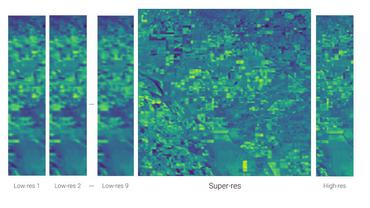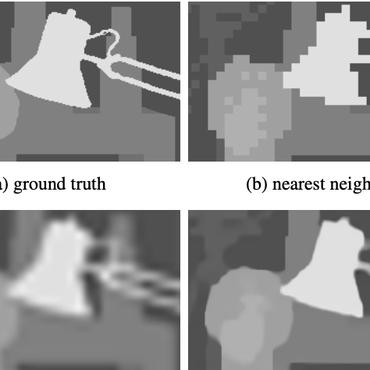Super-Resolution
1271 papers with code • 0 benchmarks • 20 datasets
Super-Resolution is a task in computer vision that involves increasing the resolution of an image or video by generating missing high-frequency details from low-resolution input. The goal is to produce an output image with a higher resolution than the input image, while preserving the original content and structure.
( Credit: MemNet )
Benchmarks
These leaderboards are used to track progress in Super-Resolution
Datasets
Subtasks
Most implemented papers
Generative Adversarial Networks
We propose a new framework for estimating generative models via an adversarial process, in which we simultaneously train two models: a generative model G that captures the data distribution, and a discriminative model D that estimates the probability that a sample came from the training data rather than G. The training procedure for G is to maximize the probability of D making a mistake.
Photo-Realistic Single Image Super-Resolution Using a Generative Adversarial Network
The adversarial loss pushes our solution to the natural image manifold using a discriminator network that is trained to differentiate between the super-resolved images and original photo-realistic images.
Perceptual Losses for Real-Time Style Transfer and Super-Resolution
We consider image transformation problems, where an input image is transformed into an output image.
Image Super-Resolution Using Deep Convolutional Networks
We further show that traditional sparse-coding-based SR methods can also be viewed as a deep convolutional network.
Enhanced Deep Residual Networks for Single Image Super-Resolution
Recent research on super-resolution has progressed with the development of deep convolutional neural networks (DCNN).
ESRGAN: Enhanced Super-Resolution Generative Adversarial Networks
To further enhance the visual quality, we thoroughly study three key components of SRGAN - network architecture, adversarial loss and perceptual loss, and improve each of them to derive an Enhanced SRGAN (ESRGAN).
SinGAN: Learning a Generative Model from a Single Natural Image
We introduce SinGAN, an unconditional generative model that can be learned from a single natural image.
Real-Time Single Image and Video Super-Resolution Using an Efficient Sub-Pixel Convolutional Neural Network
This means that the super-resolution (SR) operation is performed in HR space.
High-Resolution Image Synthesis with Latent Diffusion Models
By decomposing the image formation process into a sequential application of denoising autoencoders, diffusion models (DMs) achieve state-of-the-art synthesis results on image data and beyond.
Beyond a Gaussian Denoiser: Residual Learning of Deep CNN for Image Denoising
Discriminative model learning for image denoising has been recently attracting considerable attentions due to its favorable denoising performance.

 MSU SR-QA Dataset
MSU SR-QA Dataset
 TextZoom
TextZoom
 RealSRSet
RealSRSet
 DRealSR
DRealSR
 Holopix50k
Holopix50k
 PROBA-V
PROBA-V
 Stanford Light Field
Stanford Light Field
 OST300
OST300







